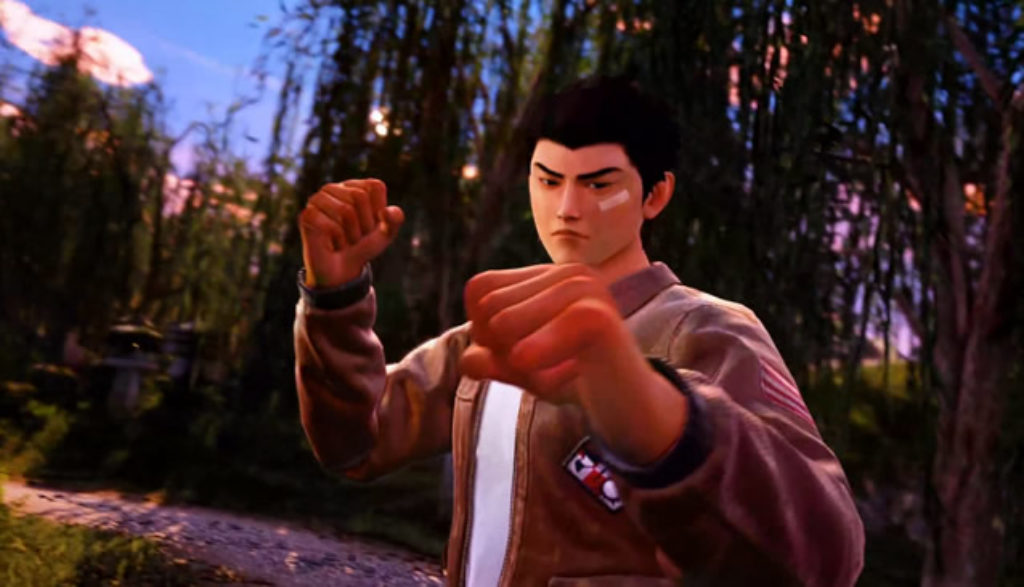
Old videogame series never die … they just disappear for a while until someone resurrects them. Or at least, that’s how it feels sometimes. And the new game Shenmue III is a perfect case in point.
Back in 1999, the first Shenmue game was developed for the Sega Dreamcast system. It was a pretty groundbreaking advance in videogame storytelling and world-building. In fact, it was reported to have cost some $47 million to develop, which made it the most expensive game ever made at the time. And Shenmue presented a detailed, talk-to-anyone world (set in an Asian context) that instantly gained a rabid fanbase.
Of course, big advances via big budgets can also result in big financial faceplants. And after a 2001 sequel, the franchise—along with all of Sega’s gaming console efforts—called it quits, packed up and headed for the proverbial coast. Twenty years and an instantly funded Kickstarter campaign later, the story of a young, inquisitive martial arts master is back and, uh, kicking.
The game’s story begins in 1987 with twentysomething Ryo Hazuki and his friend (and potential love interest), Shenhua, heading to the Chinese village of Bailu. They’re following up on the mysterious disappearance of Shenhua’s stonemason dad. Ryo also thinks the missing man might be linked, or hold clues to, the death of his own father.
Could the mystery all tie into Shenhua’s family treasure: the Sword of the Seven Stars? And could a local stone quarry and some special artifacts known as the Phoenix and Dragon Mirrors somehow be involved, too? What exactly is happening to the local stonemasons? And who are these roving thugs known as the Red Snakes?
There are many questions and few answers. So gamers must walk through fictional Chinese villages and towns and interact with as many people as they can. Along the way, players sleep and eat; collect key items and story clues; follow up on small quests and activities; improve their jiu jitsu and kung fu moves through training and sparring; and engage scores of thugs in hand-to-hand combat.
Securing needed pieces to the narrative puzzle may involve spending an afternoon of game time playing hide-and-seek with some village kids, or devoting several in-game days to learning a special move from a wine-guzzling kung fu master, or simply investing in the repetitive act of chopping wood or gambling with pachinko balls. And you’ll definitely need to spend many hours talking to people who have no interest in you and no information to give before you stumble upon someone who remembers some small observed detail.
It’s all designed to give gamers a sense that they’re actually living and breathing in Shenmue III’s world.
To some devoted fans, all of the above may well feel like coming home to a beloved game that they remember well. To others, it can feel like a whole lot of grinding and grating wasted time.
Yes, there’s definitely a certain beauty to the expansive, talk-to-everyone world this game creates. But at the same time, it’s also a bit strange. The character graphics here can look odd, the dialogue is clunky, and the gameplay (which often feels quite mundane) can slog on for 40 to 100 hours depending on how detailed you want to be.
The game slips in some negative content, too. Female characters’ attire is rather conservative looking most of the time, but then you’ll come upon women in very low-cut and revealing outfits and run into flirtatious ladies who clearly want some of handsome Ryo’s attention. Characters may also slip in randy comments about a spouse’s “pep” in bed or vocalize rude statements about a certain woman’s body parts. There’s lots of different gambling options at your fingertips, as well as the ability to drink from bottles of beer and jugs of wine. And as the awkward dialogue spills out, it can be occasionally peppered with uses of the vulgarities such as “h—,” “d–n,” “a–,” “b–ch” and “pr-ck”—fairly harsh language for a T-rated game.
In many ways, then, Shenmue III is a reminder of how far video games have come in the last 20 years. But not all of the changes in this much-buzzed-about reboot are positive ones.

After spending more than two decades touring, directing, writing and producing for Christian theater and radio (most recently for Adventures in Odyssey, which he still contributes to), Bob joined the Plugged In staff to help us focus more heavily on video games. He is also one of our primary movie reviewers.